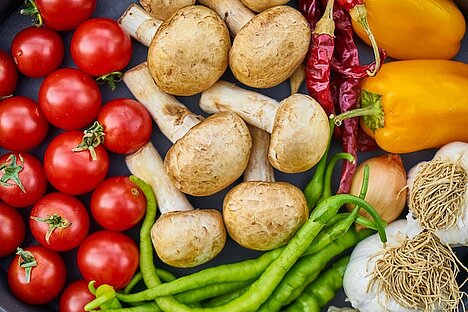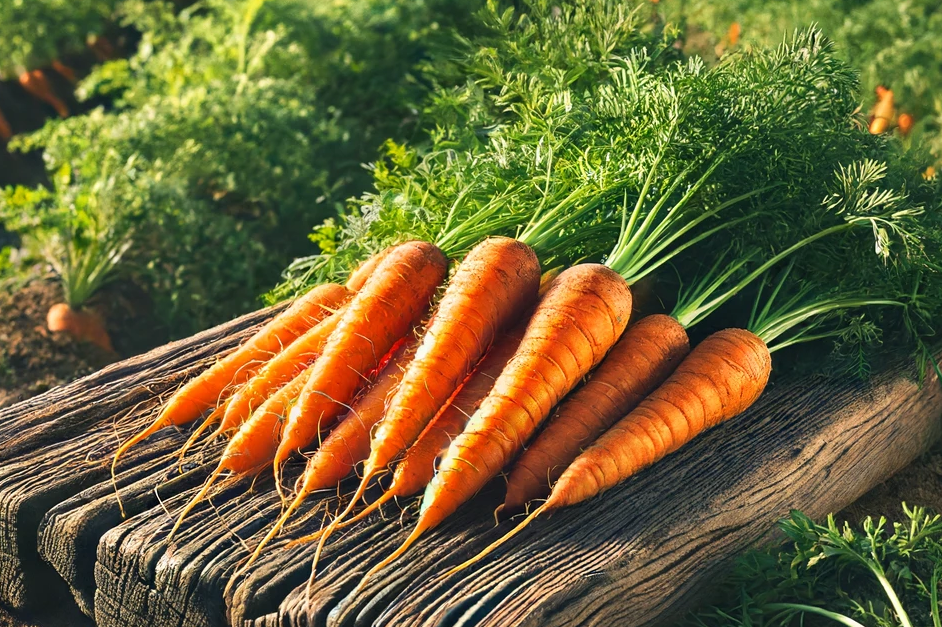Vegetables

Vegetables can be a useful addition to a dog's diet. They provide important nutrients for the dog's health and well-being and can also help with certain ailments. For example, vegetables can aid digestion, strengthen the immune system or reduce inflammation.
Which vegetables can my dog eat?
Not all vegetables are suitable or tolerated by dogs. Some vegetables can even be poisonous or harmful. That's why you should always do your research before offering your dog something new.
These vegetables are generally safe to feed:
- Broccoli (steamed only): Broccoli is very healthy for your four-legged friend as it contains lots of vitamin C, vitamin B, iron, potassium, sodium, calcium and carotene.
- Chinese cabbage (in small quantities): This type of cabbage is easier to digest and does not have a bloating effect.
- Cucumbers: Most dogs love cucumbers as they make a perfect snack between meals. They consist of 96 percent water and contain hardly any calories.
Other suitable vegetables are:
- Artichokes
- leaf lettuce
- fennel
- carrots
- pumpkin
- peppers
- Parsnips
- Beet
- Celery
- Sweet potatoes
- Zucchinis
Which vegetables should my dog not eat?
You should not give your dog these vegetables:
- Avocado: Avocado contains persin, a toxin that can cause heart problems.
- Garlic: Garlic belongs to the onion family, which contains sulphur-containing compounds that can damage red blood cells.
- Potatoes: Raw potatoes are difficult to digest and contain solanine, a toxin that can cause gastrointestinal problems.
- Tomatoes: Tomatoes also belong to the nightshade family like potatoes and contain solanine. They can also cause allergies.
Other unsuitable vegetables are:
How do I feed my dog vegetables?
If you want to feed your dog vegetables, you should bear a few points in mind:
- Introduce new vegetables slowly and observe your dog's reaction. Some dogs have individual intolerances or preferences.
- Cut the vegetables into small pieces or puree them. This way you can ensure that your dog can chew and digest it well.
- Lightly boil or steam hard or flatulent vegetables. This makes them more digestible and increases the bioavailability of the nutrients.
- Mix the vegetables into your dog' s main food. This allows you to make the most of the nutrients from the vegetables. Pay attention to the right amount of vegetables. As vegetables are important for a species-appropriate diet for dogs, your dog should have 20 to 30 percent vegetables per meal in its dog food. For four-legged friends who don't like vegetables or fruit, you can also use special vegetable or fruit mixes from specialist retailers.
Vegetables for dogs are a great way to offer your dog a varied and healthy diet. It provides them with important nutrients that promote their health and well-being. However, you should pay attention to which vegetables you feed your dog and how you prepare them.
Not all vegetables are suitable or tolerated by dogs.
Properties 5
Are you looking for other ingredients with a specific property?
Just click on them to find more.
If you notice any signs of hypersensitivity or poisoning in your dog, you should see your vet immediately. We are not a substitute for a vet, but we try to be as accurate as possible. Every dog reacts differently and we recommend you get a second opinion or consult your vet if in doubt.
Stay healthy and take good care of your four-legged friend!😊
Similar to Vegetables
Carrots are root vegetables that belong to the umbellifer family. They have an orange color, which comes from the plant pigment beta-carotene. This is converted in the body into vitamin A, which is...
Peppers are a plant from the nightshade family, which also includes tomatoes, potatoes and eggplants. There are different varieties of peppers, which vary in shape, color and heat. The best known...
There are different types of peas that you can give your dog, such as Green peas: These are the classic peas that you can buy fresh, frozen or dried. They are safe for dogs as long as they are not...
The pumpkin belongs to the gourd family (Cucurbitaceae) and originally comes from America. There are over 800 different pumpkin varieties, which differ in shape, color, size and taste. Most pumpkins...



